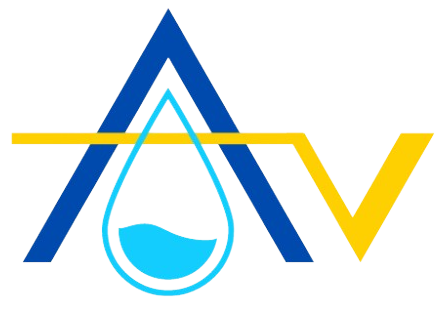Best 5 High Water Table Foundation Solutions

High water table is considered as when the level of underground water is close to the surface of the soil (ground level). High water table separates the unsaturated zone (where soil contains air and water) from the saturated zone (where all spaces are filled with water). The saturated zone adds additional water pressure to the below-ground structures rather than the unsaturated zone. Hence, a high water table always affects negatively the below-ground structures such as the foundation, and the basements.
High water tables close to the foundation cause many water problems and damages due to water penetration through the foundation floor and walls. Aqviz experts have dealt with these types of problems over the past few years. Finally, we got the best 5 solutions that you can apply for your high water table foundations.
5 best high water table foundation solutions
- Install a French drain
- Install a sump pump
- Improve proper soil grading
- Install a waterproofing membrane
- Drill a well close to the foundation (optional)
1. Install a French Drain System
A French drain system is one of the most effective ways to manage a high water table and prevent foundation water intrusion. This system consists of a perforated pipe installed in a gravel-filled trench around the foundation, redirecting groundwater away from the structure. By providing a path of least resistance, the French drain reduces hydrostatic pressure against the foundation walls, minimizing the risk of leaks, cracks, and structural damage.
At Aqviz, we recommend installing the drain at the footing level with a proper slope and a reliable outlet for water discharge. As well as you should also conduct regular maintenance, such as clearing debris and ensuring free water flow, to extend its lifespan and performance.

2. Install a Sump Pump with High Flow Rate
A high-flow rate sump pump is essential for homes with a high water table, as it actively removes accumulated groundwater before it can seep into the foundation. Installed in a sump pit at the lowest point of the basement or crawl space, the pump automatically activates when water levels rise and efficiently discharges excess moisture away from the home.
Aqviz experts emphasize choosing a pump with sufficient horsepower and backup power options to handle heavy water, especially during storms or rain and the winter season.
3. Improve Proper Soil Grading Away from the House
Proper soil grading is important to managing a high water table near the foundation. When the ground slopes away from the foundation, rainwater, and groundwater are naturally directed away.It reduces the risk of excessive moisture accumulation around the structure.
Poor ground grading leads to water pooling near the foundation, increasing hydrostatic pressure at the foundation. Hence you should maintain the minimum slope of 6 inches over the first 10 feet to facilitate proper drainage. Using compacted soil with clay content for foundation filling helps to prevent water penetration close to the foundation walls.

4. Install a Waterproofing Membrane
An exterior foundation waterproofing membrane is one of the most reliable defenses against water intrusion in high water table conditions. Exterior waterproofing creates a barrier on the foundation surface and it blocks all the water penetration from the water source. You can install a sheet membrane or liquid membrane on the foundation.
Exterior waterproofing is more affordable for the higher water table foundation. It reduces hydrostatic pressure and prolongs the foundation’s durability. For optimal results, proper surface preparation, seam sealing, and integration with drainage systems, such as a French drain, ensure long-term waterproofing performance.

5. Drill a Well Close to the Foundation and Pump Water (Optional)
In areas with persistently high water tables, drilling a well near the foundation can provide an active method of water control. By strategically placing a well at a lower elevation, excess groundwater can be pumped out before it reaches critical levels around the foundation.
This reduces hydrostatic pressure and prevents water from seeping into basements or crawl spaces. Aqviz specialists recommend using a submersible pump with an automatic float switch for continuous operation. However, this method requires ongoing maintenance and energy costs, making it a more suitable option when other passive drainage solutions are insufficient.
What is a High Water Table in the Foundation?
A high water table in the foundation is the top of the ground water level, the distance is close to the ground level. Infact, high water column with considering the foundation footing. This can cause constant moisture pressure on basement walls, leading to leaks, cracks , and structural damage. It also increases the risk of flooding, mold growth, and foundation instability.
What Causes a High Water Table in the Foundation?
A high water table causes these 5 main factors.
- Heavy rainfall and poor drainage
- Improper ground grading
- Underground plumbing leak
- Clay or dense soil compilation near the foundation
- Seasonal changes
